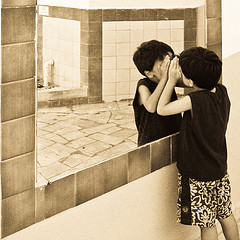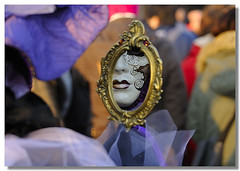Nia student Isabelle Alzado wrote me a few days ago and made this request:
“I love you and ask you to take your turn to listen to your body – the way Nia shows us – the way you show us [to say], ‘Body . . .'”
So at Isabelle’s request, every night, as I ebb and flow between sleep and wakefulness, revved up on prednisone while savoring the sweet taste of each breath in my lungs, I do the practice Nia teaches us.
I address my body by first saying, “Body.” Thus I awaken my relationship with my body, I ask for my body’s attention and I let my body know I’m now giving her my attention.
I speak aloud, so my body can hear me, but softly, so as not to disturb my sleeping husband, Richard, who, angel that he has been through all this, needs his rest, too:
“Body, I love you.
Body, I love you.
Lungs, I love you.
Bronchi, I love you.
Bronchioles, I love you.
Alveoli, I love you.
Alveolar capillaries, I love you.
Cilia, I love you.
Immune system, I love you.
Prednisone, I love you.
Body, I love you.”
And even,
“Pneumonia, I love you.”
This practice carries me every night like a small boat, guiding me through what David Whyte in his poem, “The Well of Grief,” calls the black water, the place we cannot breathe and the source from which we drink.
It’s a peaceful practice and a profound practice, a loving and heartbreaking practice, a hopeful practice. It’s a practice about learning to approach the holy temple of the body again and again. Learning to approach the body with more and more courtesy, more gradualness, more respect. It’s a practice of letting go and receiving more intimacy with the body, more intimacy with the moment, more intimacy with the Mystery.
Strangely and humorously, this serious and beautiful nightly ritual of blessing and navigating is regularly punctuated by Michael Jackson singing in my head, “Man In The Mirror” (click here to listen). It’s literally part of the wake up call, facilitated by speedy prednisone. Wake up. Look at myself. Make that Change.

Man In The Mirror
Gotta make a change
For once in my life
It’s gonna feel real good
Gonna make a difference
Gonna make it right
That’s why I’m starting with me
I’m starting with the man in the mirror
I’m asking him to change his ways
And no message could have been any clearer
If you wanna make the world a better place
Take a look at yourself and then make a change

You gotta get it right, while you got the time
‘Cause when you close your heart
You can’t close your mind
Then you close your mind
Oh no, Oh no, I’m gonna make a change
It’s gonna feel real good
Sure mon
Change!
Just lift yourself
You got, you got to move
You got to stand up, stand up, stand up
Make that change
Stand up and lift yourself, now
Make that change
You know it, you know it, you know it, you know
Change!
Make that change.
— Michael Jackson

What is the change?
It is unfolding, and as it does, I will do my best to witness, see, learn and move.
The essence of the call to change is this: To sense, again and again, the space of the infinite moment that exists between the exhale and the inhale.
The call to change is this: To remember, again and again, that the infinite moment between the exhale and inhale is itself the very threshold between life and death, nestled naturally within in the body. That life and death are the same, brother and sister, warp and woof of the fabric of the sweet breath of the holy. That we naturally dwell upon the threshold between life and death 25,000 times every single day.
The call to change is this: To receive in the body the gift and the invitation that the body itself is offering us every two seconds. The infinite moment after exhaling is a still point where the dynamic homeostasis of the body — itself a mysterious dance — resets. The nervous system, and hence the whole self, can renew. The parasympathetic nervous system (or relaxation response) comes forth to balance our habitual fight or flight away from where we are. We are brought completely into the present of all that is.
The call to change is this: The still point is a biological and spiritual field in which to rest, to be, to die and be reborn again wholly new, whatever that means, wholly changed, perhaps utterly transformed.
The call to change is this: To feel the sensation of a shabbos that arrives at the completion of each breath 25,000 times every single day, inviting us to stop — to land and rest beneath the wings of the Mystery, before the next holy breath arrives in the lungs to fill the wings of the heart for the body, for the soul and for the world.

The call to change is this: Shimmering holy amnesiacs that we are, let us remember that we forget, that we are dutifully pulled, for better and worse, into, as William Stafford said, “a pattern that others made . . . in the world, and [so] following the wrong god home we may miss our star,” and in our busynesses or distraction or well-crafted grief-defense mechanisms may cast off the gift the body is giving us.
The call to change is this: To practice ever-deepening courtesy to the body. To choose to approach the body with gradual and loving sensory awareness. To unchoose the terrified and terrifying conditioning of the last five thousand years that has told us the body is a slave to be ridden to work and leisure and to choose instead to sense, feel and be the body.
The call to change is this: This is the work we do inside the holy of holies, within the temple called the body. This is the abode where the vast infinite and intimate moment between exhaling and inhaling and between the visible and the invisible resides.
The call to change is this: Be in the body and the immense Mystery that is there. Stay. Say yes. And somehow, be at home, here, now, for one more breath, one more prayer, one more expression of the love and life that, baruch hashem, we have each been given.
The call to change is this: I desire never to forget or abandon the gifts my body is continuously offering. I desire to always live and love courageously, courteously and beautifully, in my body, and therefore, in and for the Mystery.
Body, I love you.

(Third in a series about healing pneumonia and asthma.)



3 responses so far ↓
1 Sharry // Nov 1, 2009 at 6:28 am
Thank you for these inspirational words (all puns intended). What a mantra: I love you, body.
Blessings,
Sharry
2 Ruth // Nov 1, 2009 at 10:58 am
My glorious enchanting mystifying
Daughter
I bow to your wisdom
found in hellish disarray.
I bow to your glistening blazing words
caught between a lost inhale
and remembered.
3 Aliveness // Nov 5, 2009 at 8:25 pm
[…] morning, as I was doing the “Body, I love you” practice, it came to me, seeping up to consciousness from within my lungs themselves, that […]
Leave a Comment